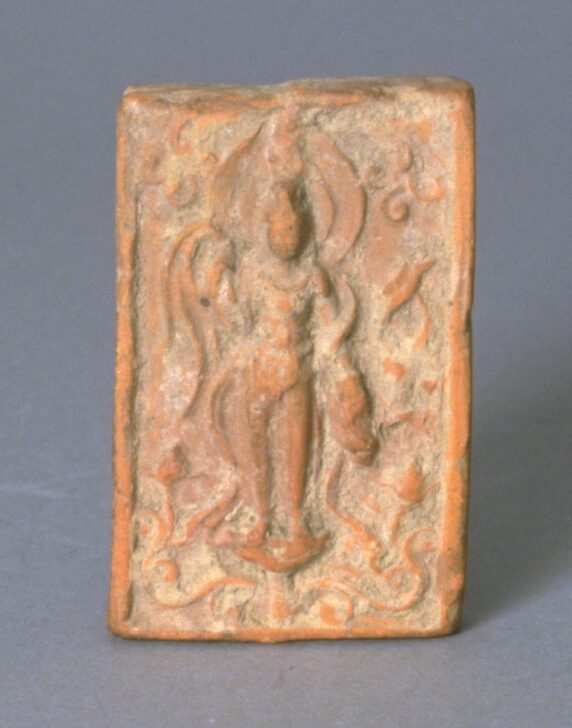Bodhisattva Avalokitesvara (Chinese, Guanyin) with a willow branch and vase
Chinese

Description
Bodhisattvas, or spiritually advanced beings destined to become Buddhas, play a central role in Mahâyâna Buddhism, as embodiments of certain aspects of the teachings and as divinities to whom one could pray. Throughout Asia, the most popular bodhisattva was Avalokitesvara, “the lord who looks down and listens with compassion.” He can be recognized by the large lotus blossom he holds in his left hand.
Maribeth Graybill, Senior Curator of Asian Art
Exhibited in "Flora and Fauna in Chinese Art," April 6, 2002 - December 1, 2002.
Subject Matter:
"In Chinese Buddhism, Guan Yin is synonymous with the Bodhisattva Avalokitesvara, the pinnacle of mercy, compassion, kindness and love.
Along with Buddhism, Guan Yin's veneration was introduced into China as early as the 1st century AD, and reached Japan by way of Korea soon after Buddhism was first introduced into the country from the mid-7th century.
Representations of the Bodhisattva in China prior to the Song Dynasty (960-1279 AD, Northern - and Southern Song Dynasty) were masculine in appearance.
It is generally accepted that Guan Yin originated as the Sanskrit Avalokitesvara, which is her male form, since all representations of Bodhisattva were masculine.
Later images might show female and male attributes, since a Bodhisattva, in accordance with the Lotus Sutra, has the magical power to transform the body in any form required to relieve suffering, so that Guan Yin is neither woman nor man. In Mahayana Buddhism, to which Chinese Buddhism belongs, gender is no obstacle to Enlightenment.
As the Lotus Sutra relates, the Bodhisattva Kuan Shih Yin, "by resort to a variety of shapes, travels in the world, conveying the beings to salvation."
The representation in China was further interpreted in an all-female form around the 12th century, during the Ming Dynasty (1368- 1644 AD).
In the modern period, Guan Yin is most often represented as a beautiful, white-robed woman, a depiction which derives from the earlier Pandaravasini form.
Guan Yin is usually shown in a white flowing robe - white being the symbol of purity -, and usually wearing necklaces of Indian/Chinese royalty. In the right hand is a water jar (as the Sacred Vase the water jar also one of the Eight Buddhist Symbols of good fortune) containing pure water, the divine nectar of life, compassion and wisdom, and in the left, a willow branch to sprinkle the divine nectar of life upon the devotees as to bless them with physical and spiritual peace. The willow branch is also a symbol of being able to bend (or adapt) but not break. The willow is also used in shamanistic rituals and has had medicinal purposes as well."
https://www.nationsonline.org/oneworld/Chinese_Customs/Guan_Yin.htm
Physical Description:
A portable icon featuring Guanyin. She is standing in a walking position and is carrying a willow branch and vase.
Usage Rights:
If you are interested in using an image for a publication, please visit https://umma.umich.edu/request-image/ for more information and to fill out the online Image Rights and Reproductions Request Form.